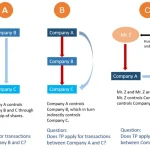Introduction:
Malaysia is gearing up for a major reform as it prepares to fully implement electronic invoicing. This initiative aims to align with the global trend of digital revolution and propel the country’s tax system towards a new milestone. The electronic invoicing system by the Inland Revenue Board of Malaysia will bring numerous benefits to taxpayers, enhancing the efficiency of tax mechanisms and avoiding the loss or occurrence of ambiguous errors in records. Furthermore, the system will enhance tax transparency and reduce tax evasion.
Let us explore together the concept of electronic invoicing, its advantages, challenges, implementation process, and how it will transform Malaysia’s taxation environment, providing taxpayers with a more convenient, efficient, and reliable financial management experience.
Understanding E-Invoicing:
E-invoicing, or electronic invoicing, refers to the electronic creation, submission, and archiving of invoices in a standardized digital format. Unlike traditional paper-based invoicing systems, e-invoicing enables businesses to generate, send, receive, and process invoices digitally. E-invoices are typically exchanged between buyers and suppliers through secure electronic platforms or Application Programming Interfaces (APIs), allowing for seamless and efficient transaction processing.
Motivations for Introducing E-Invoicing in Malaysia:
The Government of Malaysia has identified several key reasons for introducing e-invoicing in the country. These motivations include:
- Ensuring Tax Compliance:The implementation of e-invoicing aims to ensure that businesses are registered with the tax authority. By digitizing the invoicing process, e-invoicing helps streamline the reporting of income and facilitates compliance with tax regulations.
- Combating Tax Evasion:E-invoicing plays a crucial role in combating tax evasion by creating a transparent and traceable invoicing system. The electronic trail created through e-invoicing reduces the chances of income going unreported or being underreported, contributing to a more equitable tax system.
- Tackling Illicit Activities:Another motivation for implementing e-invoicing is to combat smuggling, illegal activities, and other fraudulent practices. By promoting transparency and accountability in business transactions, e-invoicing helps reduce the opportunities for illicit activities.
Challenges and Solutions:
- Adoption and Awareness:
The successful implementation of e-invoicing requires widespread adoption and awareness among businesses. Government initiatives, public-private partnerships, and educational campaigns can play a pivotal role in promoting understanding and encouraging participation. - Interoperability and Standardization:
To ensure seamless exchange of e-invoices, it is crucial to establish common standards and interoperable systems. Collaboration among stakeholders, including government agencies, technology providers, and industry associations, is vital for achieving compatibility and harmonization. - Cybersecurity and Data Protection:
As e-invoicing involves the exchange of sensitive financial information, ensuring robust cybersecurity measures is essential. Businesses must invest in secure platforms, encryption technologies, and data protection protocols to safeguard against cyber threats and maintain customer trust.
Implementation Process and Timeline:
To facilitate the smooth transition to e-invoicing, Malaysia has proposed an implementation timeline. This phased approach allows businesses to adapt gradually to the e-invoicing system, considering their varying capacities and resources.
Overview of the e-invoicing process in Malaysia:
To facilitate the implementation of e-invoicing in Malaysia, a structured process is followed to ensure compliance and efficient exchange of electronic invoices. Here is an overview of the e-invoicing process in Malaysia:
- Registration and Tax Identification:Both the buyer and seller are required to register with the Inland Revenue Board of Malaysia (HASiL) and obtain a tax identification number.
- Submission of E-Invoice to HASiL:The e-invoice is submitted to HASiL using an Application Programming Interface (API). This secure interface enables the transmission of invoice data to HASiL’s systems for processing.
- Verification by LHDN:HASiL conducts a thorough verification process to ensure that all requirements are met. This verification includes authenticating the taxpayer’s details and ensuring compliance with tax regulations.
- Provision of Verified E-Invoice:Upon successful verification, HASiL provides the issuer of the e-invoice with a URL data invoice that contains the verified e-invoice. This URL data invoice serves as proof of the invoice’s authenticity and compliance.
- Transmission to the Buyer:HASiL forwards the verified e-invoice data to the buyer through the API. Upon receiving the e-invoice, the seller or issuer generates a QR code for the invoice using the URL data invoice. The QR code facilitates easy retrieval and reference of the invoice by the buyer.
- Verification Notification:Both the buyer and seller receive a notification from LHDN confirming the status of the e-invoice. This notification serves as a record of the successful transmission and validation of the electronic invoice.
Future Prospects and Roadmap:
It is important to note that while this overview provides a general understanding of the e-invoicing process in Malaysia, businesses should refer to official guidelines and regulations provided by LHDN for precise implementation procedures and any specific technical requirements.
If you want to learn more about the implementation timeline and detailed information regarding electronic invoicing, visit our official website or book a demo session now and stay up to date with the latest trends! Access valuable tax knowledge and information on our TaxPOD platform.
Explore Our Knowledge Hub!
Discover a wealth of tax-related knowledge at our comprehensive Knowledge Hub. Whether you’re looking for in-depth articles, answers to frequently asked questions, or informative videos, we’ve got you covered. Visit the links below to explore each section:
Enhance your tax knowledge and stay up-to-date with the latest information by visiting our Knowledge Hub today.



